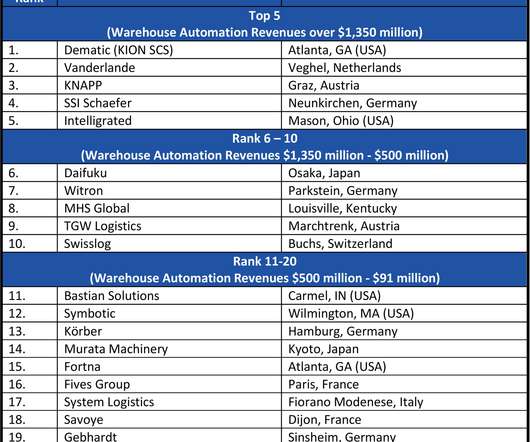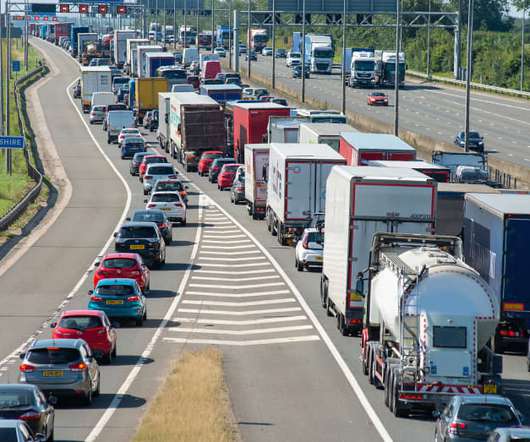Top 20 Warehouse Automation Suppliers Worldwide
Logistics Viewpoints
OCTOBER 26, 2022
ARC Advisory Group began conducting formalized research on the global warehouse automation market in 2014. We define the market as those warehouse automation providers responsible for delivery of the system to the end-user (to eliminate double-counting). Looking back, I estimated the market in 2013 at $6.4 billion in 2019.
















Let's personalize your content